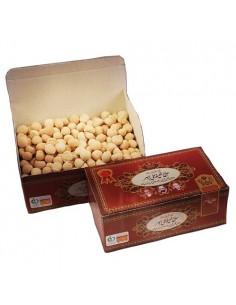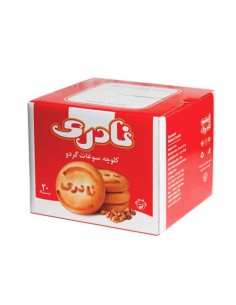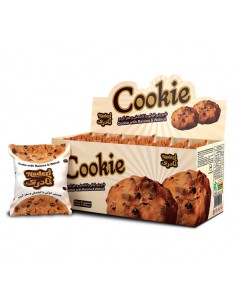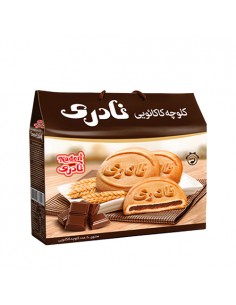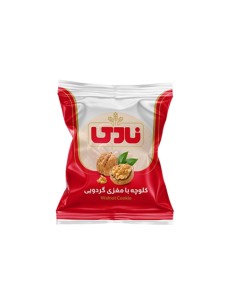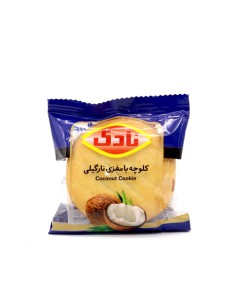Koloocheh
Iran is the land of arts, tastes, and flavors. From traditional and regional cuisines to delicious pastries, cookies, and biscuits, Persian food reflects Iranian people's age-long efforts to discover and create wonderful new flavors.
Koloocheh Review, Select, and Buying Guide
Koloocheh is a customary cookie, ubiquitous in Iran and the Middle East. This popular nibble, often accompanied by tea or coffee, is relished by individuals across all age groups. The kolache is celebrated for its singular fusion of sweet and savory, a flavor palette brought to life by the traditional ingredients of dates, cardamom, and rosewater.
Every region in Iran has its pastries, cookies, and snacks, which have been shaped over time by the culture and general taste of the people there and even by the climate of that region.
History and Origins of Koloocheh the Persian Cookie
The inception of Koloocheh dates back to ancient Persia, crediting its creation to the ingenious Persian bakers. 'Koloocheh' originates in the Persian word 'Koloocheh', signifying a small round cookie. Over centuries, koloocheh emerged as a universally loved snack across the Middle East, with each region and culture contributing its unique spin to the recipe.
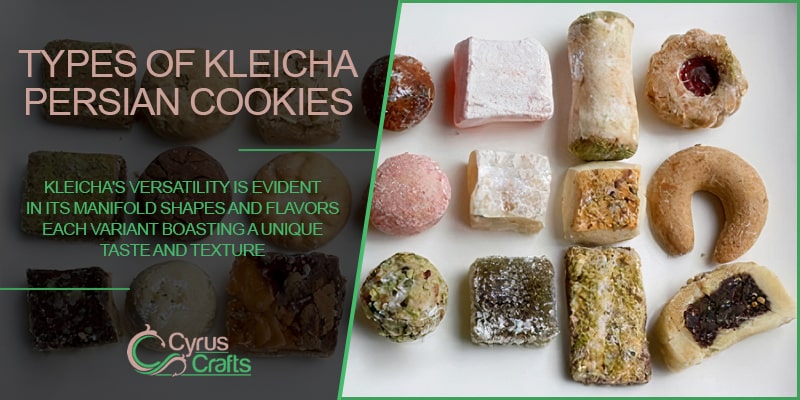
Cyrus Crafts; Luxury & Unique Products
Types of Koloocheh Cookies: A Variety of Flavors & Shapes
Koloocheh's versatility is evident in its manifold shapes and flavors, each boasting a unique taste and texture. Some of the most sought-after types of Koloocheh encompass:
- Date Koloocheh: A time-honored favorite, this variety of Kleicha blends dates, cardamom, and rosewater, creating a fragrant and traditional treat.
- Walnut Koloocheh: This Koloocheh variant, a delightful amalgamation of walnuts, sugar, and cinnamon, presents a sweet and nutty indulgence.
- Fuman Koloocheh cookies: One of the most popular of its kind, Fuman cookies originated in northern Iran. Round in shape, they're stuffed with ingredients such as walnuts, cinnamon, nutmeg, cardamom, and sugar.
- Lahijan Cookies: Also from northern Iran, Lahijan cookies are soft and greatly combine with afternoon tea or coffee. The cookies are stuffed with cinnamon, walnuts (or other nuts), vanilla powder, and other ingredients.
- Coconut Cookies: So sweet that they're sometimes called "coconut sweets," these cookies can be found all over Iran and are among the most popular Persian pastries served at holiday events and parties. As the name suggests, the main ingredient of the cookies is fresh shredded coconut, which gives them a fantastic flavor and a soft texture.
- Sesame Koloocheh: A unique blend of sesame seeds, sugar, and honey encompasses this Koloocheh type, offering a crunchy texture and a touch of sweetness.
- Ginger Cookies: Although found in many parts of the country, true ginger cookies are baked in Tabriz. One of the main ingredients, along with Persian saffron, ginger, gives the delicious cookies a special flavor and health benefits such as lowering blood sugar levels, relieving pain, and thinning the blood.
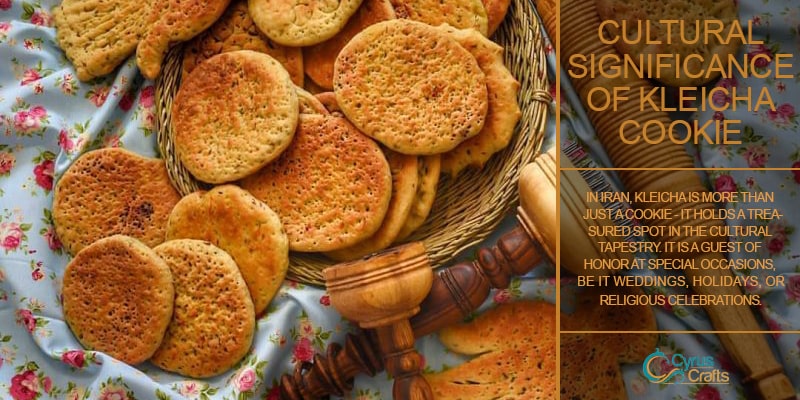
Cultural Significance of Koloocheh Cookie
In Iran, Koloocheh is more than just a cookie - it holds a treasured spot in the cultural tapestry. It is a guest of honor at special occasions, be it weddings, holidays, or religious celebrations. A symbol of hospitality, it is traditionally offered to guests as a mark of respect and friendship. Koloocheh also holds a significant position in Iranian cuisine and is a source of national pride for many Iranians.
Koloocheh Variations & Regional Influences
Koloocheh, a diverse and delectable cookie, is adored and prepared with various interpretations throughout the Middle East. Each region and culture imbues this biscuit with its unique culinary flair, creating an eclectic palette of flavors and textures. Let us embark on a flavorful journey of the most popular variations of the Koloocheh:
- Iraqi Koloocheh: This rendition of the Koloocheh is crafted with a delightful blend of dates, cardamom, and sesame seeds. Often gracing the Eid festivities with its presence, it is a cherished part of the celebration.
- Syrian Koloocheh: The Syrian Koloocheh boasts a fusion of dates or other dried fruits, pistachios, and orange blossom water. This variant is a feature of the Ramadan feast, adding a touch of sweetness to the holy month.
- Turkish Koloocheh: The Turkish version of Koloocheh is a tempting confluence of walnuts, cinnamon, and sugar. It is a favored treat during the holiday season, bringing warmth and cheer to the festive ambiance.
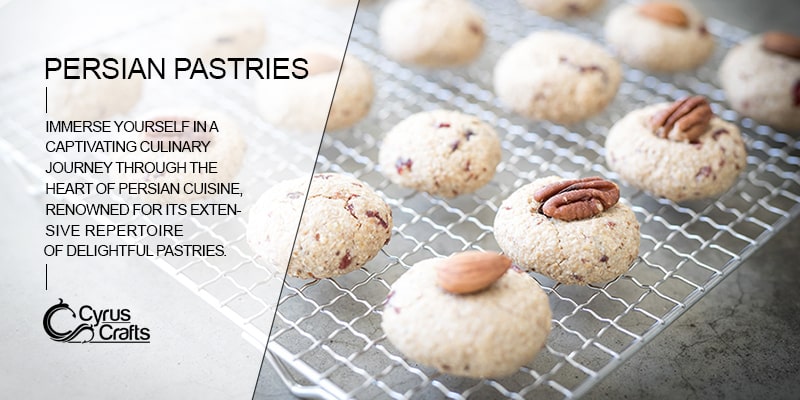
Other Persian Pastries
Immerse yourself in a captivating culinary journey through the heart of Persian cuisine, renowned for its extensive repertoire of delightful pastries. The most noteworthy are the Sohan, Baklawa, Qottab, Gaz candy, and the beloved chickpea cookie, Nan-e Nokhodchi.
- Baklava: Among the most famous and delicious Persian pastries, baklawa are also found in other countries, such as Turkey, Lebanon, Jordan, Iraq, and Azerbaijan. Baklavas are usually small and come in square, lozenge, or rolled shapes. Persian baklavas contain rose water, cardamom, vanilla, ground almond, and pistachio to give them a special flavor. Baklavas make a terrific afternoon snack with Persian tea.
- Chickpea Cookie: Among the smaller Persian pastries, Nokhodchi is soft and made from gram (chickpea) flour as their main ingredient. Garnished with ground pistachio, Nokhodchis are hugely popular with Iranians.
- Ghorabiye of Tabriz: The priciest regional Persian pastry, Ghorabiye pastries contain many pistachios and almonds, two expensive ingredients. Ghorabiehs are originally Iranian but can be found in a few other Asian countries as well. The quality pistachios used in this sweet make it a popular treat among Iranians and Middle Easterners. You can purchase high-quality Iranian pistachio at reasonable prices from CyrusCrafts online store.
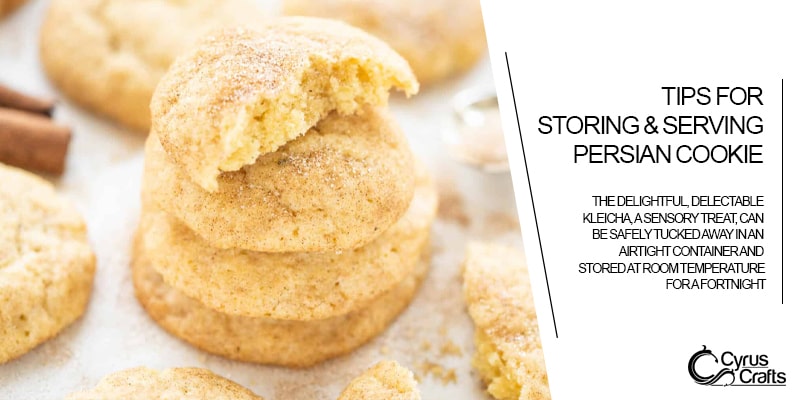
Tips for Storing & Serving Koloocheh
The delightful, delectable Koloocheh, a sensory treat, can be safely tucked away in an airtight container and stored at room temperature for a fortnight. Should you find yourself with an abundance of this delightful snack, rest assured it can be frozen and kept for up to a quarter of a year.
When the moment arrives to indulge in the Koloocheh, I implore you to gently warm it in the oven or microwave for just a fleeting moment. This will coax out the tantalizing flavors and enchanting aromas, making the experience all the more delightful.
To savor Koloocheh, pair it with a piping hot cup of tea or a rich, aromatic coffee. It is an impeccable companion to your favorite brew, making for the perfect snack or a delectable dessert. Enjoy the taste, cherish the moment, and let the Koloocheh transport you to a world of flavor.
Defining Ingredients of Persian Cookies
As you may have already noticed, some ingredients are shared by many of the cookies and pastries introduced above. These recurring ingredients are rose water, cardamom, Iranian saffron, pistachios, walnuts, almonds, cinnamon, and ginger. Giving pastries a spectacular flavor, they're often easy to find in Iran.
CyrusCrafts will provide you with high-quality and unique products as part of its specialized activity in preparing, selling, and exporting the best Iranian cookies so that you can experience a wonderful and one-of-a-kind taste and serve yourself, your family, and your guests in a healthy, unique and different way.


